Arthur Fleig
PRISMe: A Novel LLM-Powered Tool for Interactive Privacy Policy Assessment
Jan 27, 2025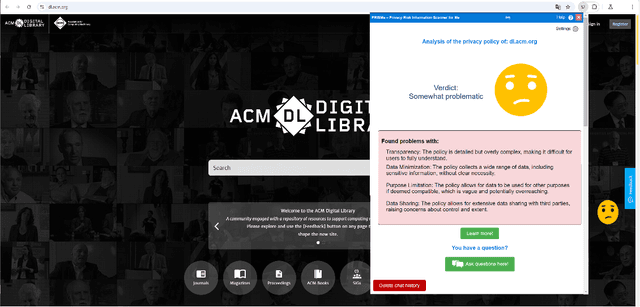

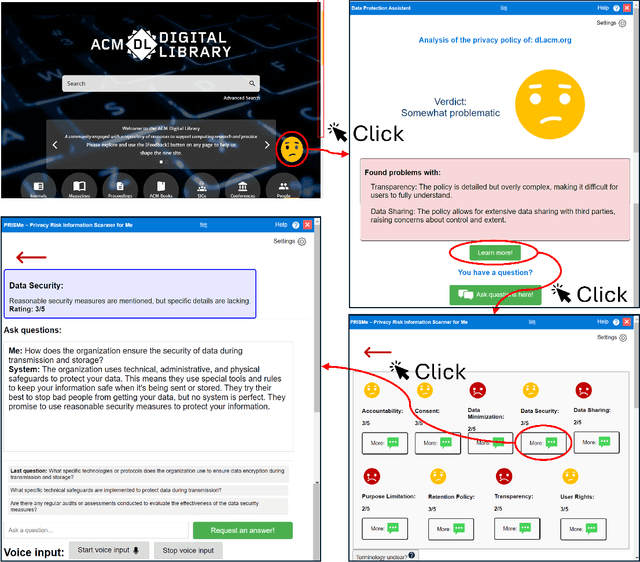
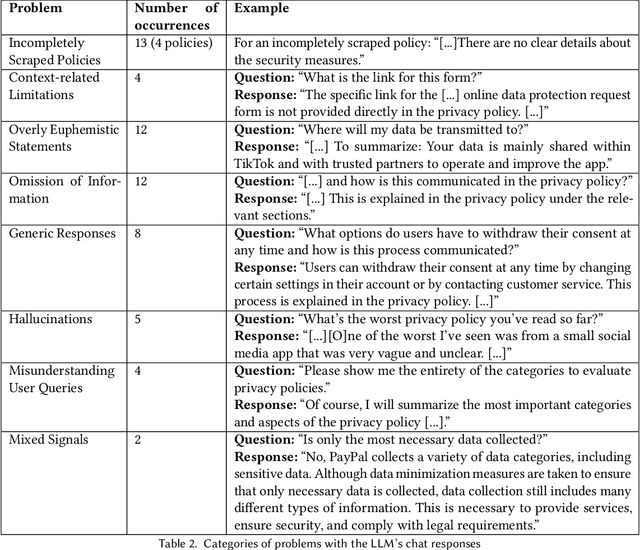
Abstract:Protecting online privacy requires users to engage with and comprehend website privacy policies, but many policies are difficult and tedious to read. We present PRISMe (Privacy Risk Information Scanner for Me), a novel Large Language Model (LLM)-driven privacy policy assessment tool, which helps users to understand the essence of a lengthy, complex privacy policy while browsing. The tool, a browser extension, integrates a dashboard and an LLM chat. One major contribution is the first rigorous evaluation of such a tool. In a mixed-methods user study (N=22), we evaluate PRISMe's efficiency, usability, understandability of the provided information, and impacts on awareness. While our tool improves privacy awareness by providing a comprehensible quick overview and a quality chat for in-depth discussion, users note issues with consistency and building trust in the tool. From our insights, we derive important design implications to guide future policy analysis tools.
Reinforcement Learning Control of a Biomechanical Model of the Upper Extremity
Nov 13, 2020
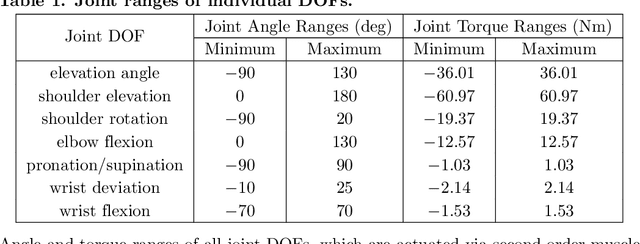
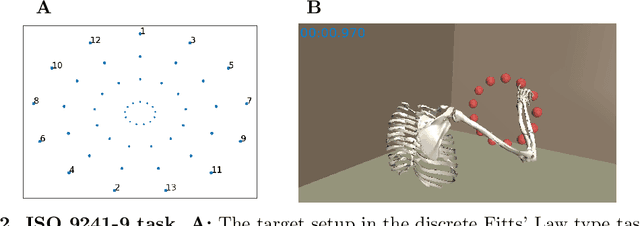
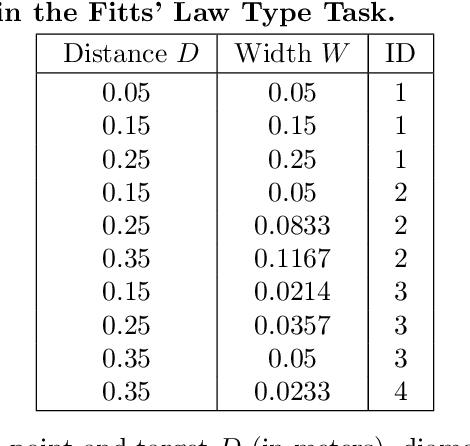
Abstract:We address the question whether the assumptions of signal-dependent and constant motor noise in a full skeletal model of the human upper extremity, together with the objective of movement time minimization, can predict reaching movements. We learn a control policy using a motor babbling approach based on reinforcement learning, using aimed movements of the tip of the right index finger towards randomly placed 3D targets of varying size. The reward signal is the negative time to reach the target, implying movement time minimization. Our biomechanical model of the upper extremity uses the skeletal structure of the Upper Extremity Dynamic Model, including thorax, right shoulder, arm, and hand. The model has 7 actuated degrees of freedom, including shoulder rotation, elevation and elevation plane, elbow flexion, forearm rotation, and wrist flexion and deviation. To deal with the curse of dimensionality, we use a simplified second-order muscle model acting at each joint instead of individual muscles. We address the lack of gradient provided by the simple reward function through an adaptive learning curriculum. Our results demonstrate that the assumptions of signal-dependent and constant motor noise, together with the objective of movement time minimization, are sufficient for a state-of-the-art skeletal model of the human upper extremity to reproduce complex phenomena of human movement such as Fitts' Law and the 2/3 Power Law. This result supports the idea that the control of the complex human biomechanical system is plausible to be determined by a set of simple assumptions and can be easily learned.
 Add to Chrome
Add to Chrome Add to Firefox
Add to Firefox Add to Edge
Add to Edge